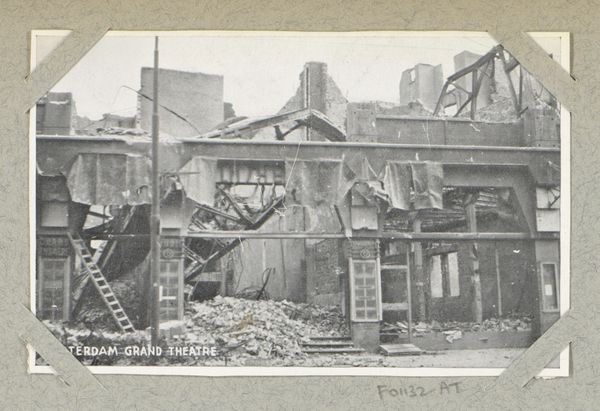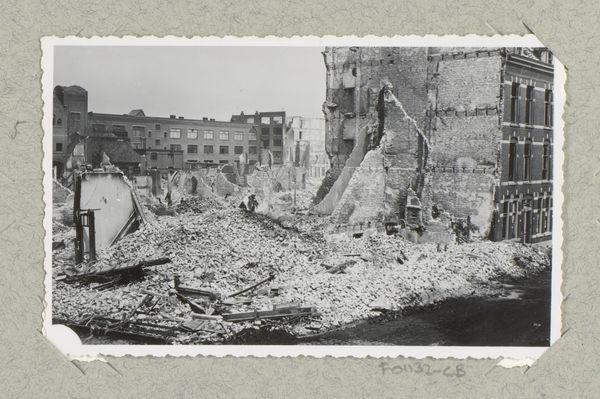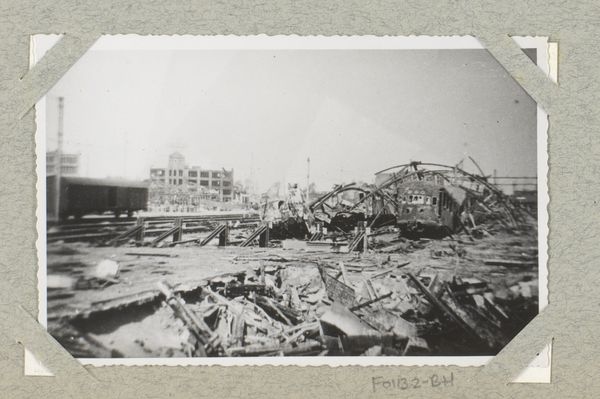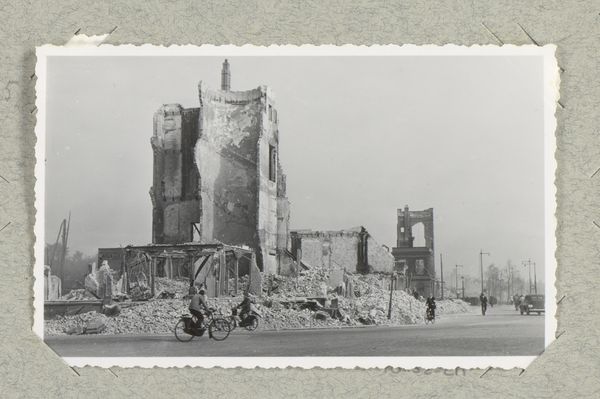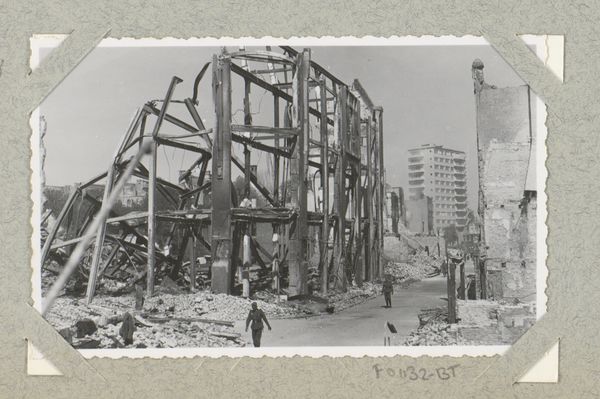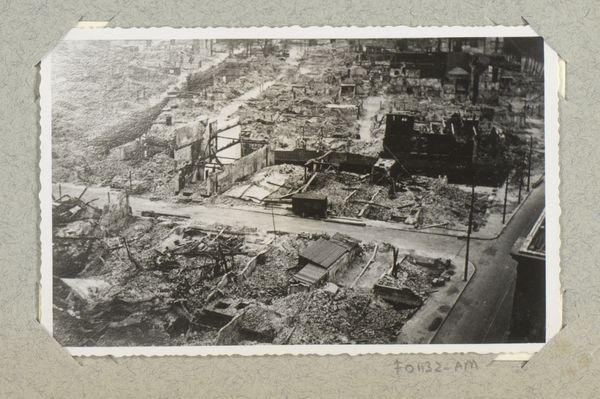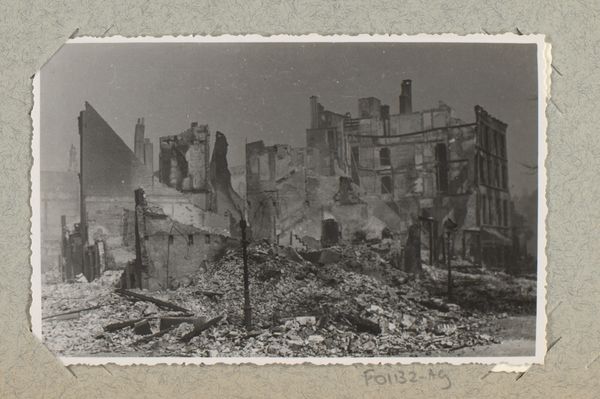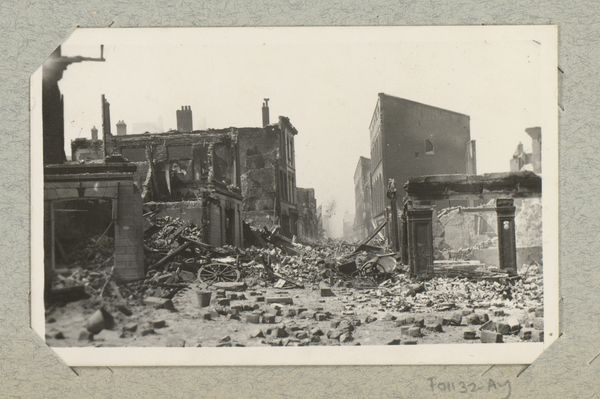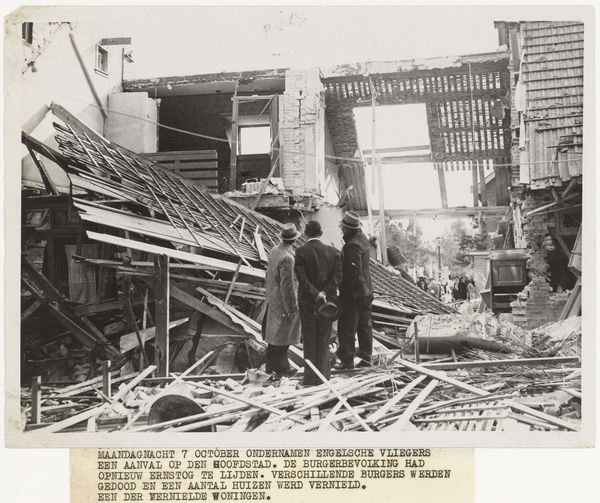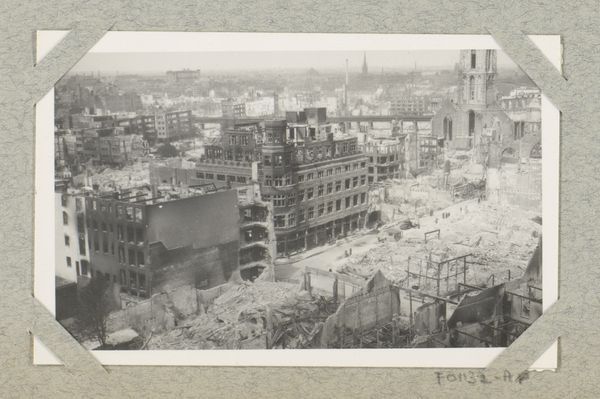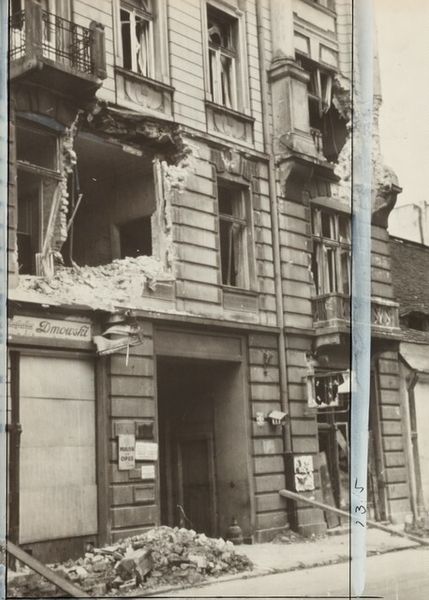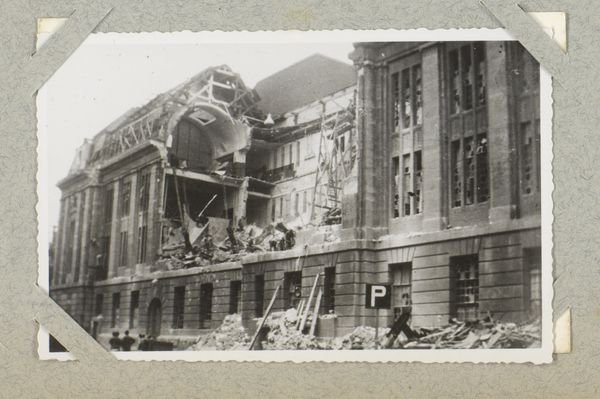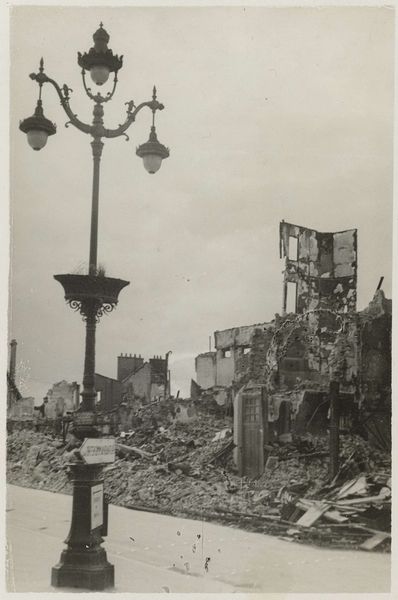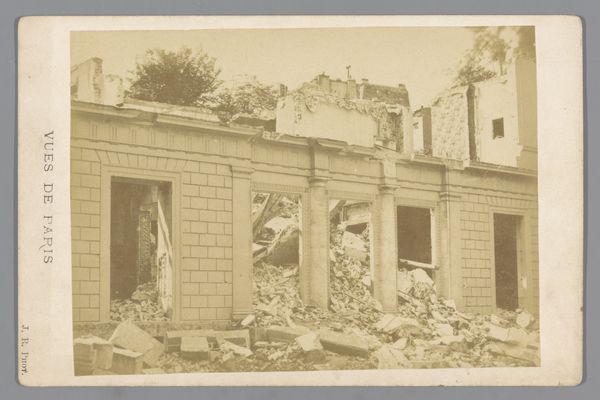
print, photography, gelatin-silver-print
# print
#
archive photography
#
photography
#
gelatin-silver-print
#
cityscape
#
history-painting
#
realism
Dimensions: height 88 mm, width 136 mm
Copyright: Rijks Museum: Open Domain
Curator: Here we have "Ruïne van het Postkantoor te Rotterdam," a gelatin-silver print by J. Nolte, likely captured between 1940 and 1945. It’s a photograph of the Rotterdam post office, or rather, what remains of it after the bombings. Editor: My first thought is just the sheer weight of history bearing down, doesn’t it? The grayscale and composition make the devastation feel stark and incredibly immediate, even decades later. It’s almost unbearably sad. Curator: It’s difficult to separate this image from its historical context. The bombing of Rotterdam in May 1940 was a pivotal moment during the Nazi invasion of the Netherlands. This photograph offers a direct visual testament to the violence and the subsequent trauma inflicted on the city and its people. Photography was crucial in shaping public memory and political narratives surrounding the event. Editor: Absolutely, and I think the image speaks to themes of resilience too. Beyond just showing the devastation, consider what it implicitly demands from its audience. It’s forcing viewers to grapple with issues of loss, urban planning after trauma, collective memory...it challenges our understanding of what public space even *means*. It’s inherently political. Curator: I agree, the ruins serve as a powerful reminder of state-sponsored violence and the fragility of civic structures. The photo's realism, achieved through its stark portrayal of the collapsed building, invites a profound reflection on institutional failure and the disruption of everyday life. Photography served not only as a document but also as a crucial instrument in the aftermath. Editor: What I find equally interesting is thinking about why someone chooses to *take* the picture, not just why they are preserved. What purpose does it serve in documenting the violence against this public space, to reproduce it visually, to preserve it over time, when photography itself has a history of colonial and power-driven narratives? Curator: It prompts essential inquiries on the social and political conditions of art production. Consider the role Nolte might have played, or the editorial slant a museum might place when exhibiting this image. Photography democratized visual representation of such large-scale, historical occurrences—a task largely fulfilled by painting prior to the 20th century. Editor: Looking at "Ruïne van het Postkantoor te Rotterdam," I am reminded how objects can embody collective traumas, making a dialogue possible and also deeply necessary. The photograph calls us to act with more compassion as the world continues to re-shape and challenge notions of what it means to be human. Curator: It underscores photography's crucial role in preserving and circulating historical accounts and challenging narratives of destruction.
Comments
No comments
Be the first to comment and join the conversation on the ultimate creative platform.
